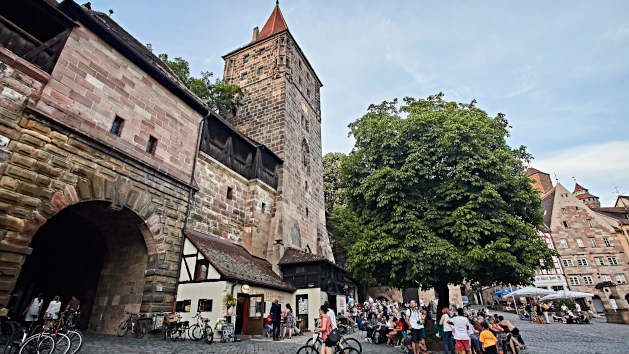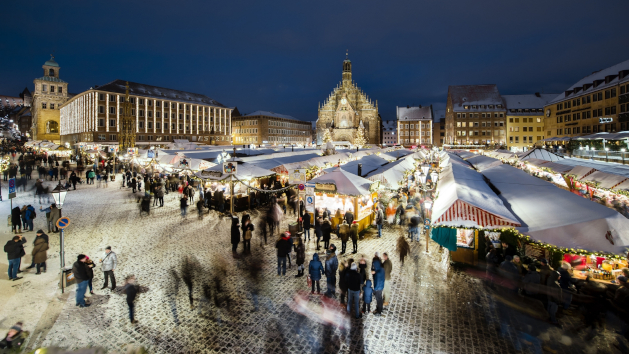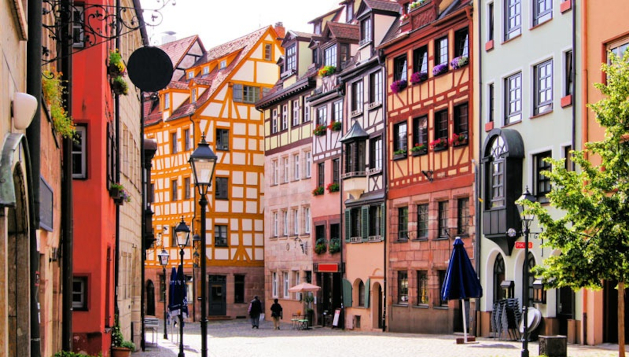Nuremberg
Bavaria’s second largest city Nuremberg was first mentioned in documents in 1050.
Bearing witness to the Holy Roman Empire in the Middle Ages, the Romanesque imperial castle, Nuremberg’s landmark, was built in the 12th century and belongs to the most impressive fortifications in Europe. Moreover, the city was an important cultural center of the Renaissance – the famous painter Albrecht Dürer was born and buried in Nuremberg.
In the 19th century, Nuremberg morphed into one of Germany’s industrial cores: in 1835, the first German railway for passengers led from Nuremberg to Fürth. With the rise of the National Socialism in the 20th century, Nuremberg unintentionally made again a name of itself – as the city of the Nazi party’s rallies (Nuremberg Rally), afterwards passing the Nuremberg Laws and finally aligning the Nuremberg Trials.
With its 500.000 inhabitants, Nuremberg now is a remarkable economic center, with several companies’ headquarters: Siemens, Triumph-Adler, AEG and MAN. The city is famous for many events, among them the annual Nuremberg International Toy Fair and its worldwide known Christmas Market, that attracts about 2 million visitors each December.
The city is also known for its culinary delicacies: not only the Nuremberg Lebkuchen, that are produced by more than a dozen different companies in Nuremberg, but also the Nuremberg grilled sausages (Rostbratwürste). These are served 2-by-2 or 3-by-3 in a bun, either with mustard or Sauerkraut.











